Metal guru: Ron Arad creates high-wire meditation for St Pancras station
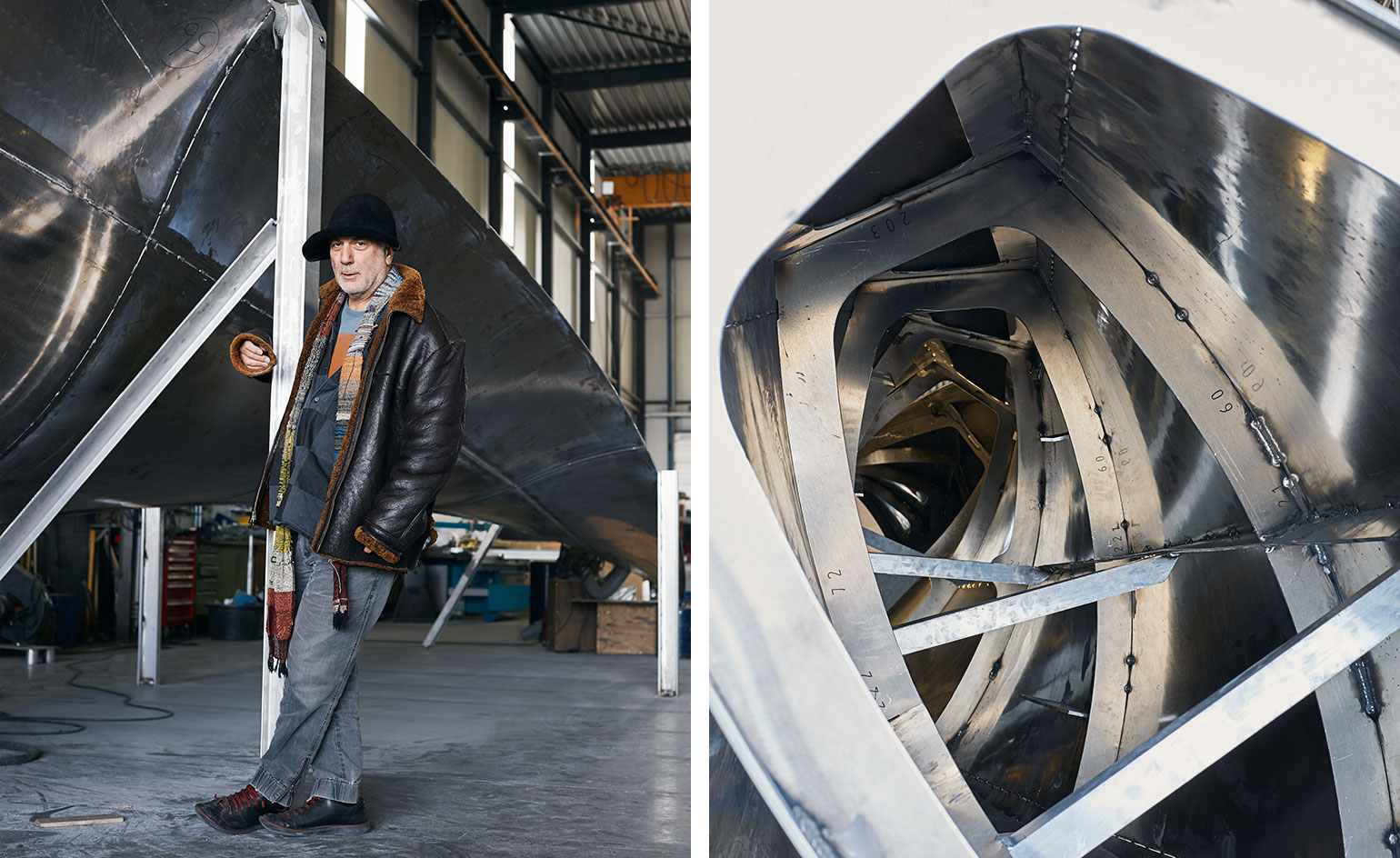
Public art in the 1940s and 50s was all about social renewal, about building a better place, for the people. Today, art in public spaces tends to be big business, often turning into the industry-sponsored exercise of adding ‘value’ of a different kind. But occasionally you come across hybrids, such as in the very public, yet privatised space of a major railway station: St Pancras in London. There has been a public art scheme here, called Terrace Wires and operated by HS1, the station’s owner, for the past four years. Every year it invites a committee comprised of broadcaster Evan Davis; Nigel Carrington, rector at the University of the Arts London; artist and curator Chris Wainwright; Royal Academy artistic director Tim Marlow; Nicola Shaw, chief executive of HS1; and Wallpaper* editorial director Richard Cook, to commission a work to hang above the Grand Terrace and below the Barlow Shed roof.
This year’s chosen artist is the architect, designer, sculptor and Royal Academician Ron Arad. The Royal Academy element is important, for this is part of an ongoing collaboration with that venerable institution. It is the first time it has curated an external public sculpture series in London in its 248-year history.
This doesn’t seem to interest Arad that much when I meet him in the heart of Dutch Friesland to inspect the progress of his piece. What excites him about the commission is the location. ‘Unusually, here we have this amazing space where the art has to be suspended,’ he says. And, being a station, it is full of the comings and goings of trains and travellers (around one million people per week). ‘So I wanted it to be a piece that has movement, that uses the fact it’s not bound or limited by gravity – let’s enjoy the freedom of the fact that it is suspended.’ He’s also responded to the array of visual stimuli at the St Pancras site with a piece that he says needs to be ‘minimal, monolithic and calm’.
The idea for the work came quickly, reveals Arad: ‘Often when you’re given a brief or a request the answer comes immediately; it’s not the result of methodical exploration or studies, it’s: “Yeah, I know what I’ll do”.’ The sculpture, called Thought of Train of Thought, is an 18m-long twisted blade of highly polished aluminium. It will hang side-on above the Grand Terrace, rotating slowly along its long axis – giving incoming train drivers the best view.
He shows me a computer animation of the installed piece on his iPad and suddenly the enormous, half-completed, twisted wing we are standing next to makes sense: when it is finished and polished to a mirror-like sheen, the shimmering reflections along its length will create a strange optical illusion. I comment that the object seems to disappear as a result and looks instead like a tear in space-time in front of the station clock, but that may just be the effect of the animation. ‘The turning on one axis,’ he says, ‘gives you the illusion of something moving from nowhere to nowhere and then disappearing, so people ask themselves: “Where does it come from?” Because it looks as though something is moving, like a train.’
Right now we are in an industrial estate on the outskirts of Franeker in Friesland because this is where CIG Architecture, which is responsible for building Thought of Train of Thought, has sourced specialist aluminium boat builders for the job. It seems an appropriate place to manufacture the blade/wing, with its visual backdrop of giant wind turbines.
Today is the first time Arad has seen the piece since it left his drawing board in London’s Chalk Farm. In his trademark shapeless hat, the designer looks a little like an overgrown Paddington Bear inspecting his art. Excited, he moves restlessly around and around the piece, filming it first on his smart phone then on the iPad. Exclaiming at the interior structure and the way the light catches the, as yet unpolished, surface, he seems pleased. I mention that with his history of building pieces, beginning with the Rover chair in 1981, it must be strange for him to have others building his ideas. ‘I used to hammer and weld myself,’ he acknowledges. ‘Here, fortunately, I’m in the hands of people who are far more skilled than me.’
It is Arad’s disdain for disciplinary boundaries that makes his work so interesting. He may be an architect and designer, but he responds to briefs like an artist, from the self. He designs buildings, makes sculptures, experiments with technology and makes one-off objects and pieces for mass production. Born in Tel Aviv in 1951, Arad enrolled at the Bezalel Academy of Arts and Design in Jerusalem in 1971, relocating to London’s Architectural Association (AA) in 1974, where he studied architecture alongside Peter Wilson, Zaha Hadid and Nigel Coates, and was taught by Peter Cook and Bernard Tschumi.
Later, when Arad became head of design products at the Royal College of Art, from 1997 to 2009, this extraordinary educational mix influenced him greatly: ‘I very much copied it. I wanted a pluralist place and I had a very good model, which was the AA.’ He certainly succeeded. In fact, Arad is as distinguished as an educator as he is as a designer, in which capacity he has had major retrospectives at New York’s MoMA, the Barbican Centre in London, and the Pompidou Centre in Paris. His former students, equally, read like a who’s who of contemporary design: Peter Marigold, Max Lamb, Paul Cocksedge, El Ultimo Grito, Studio Glithero and Random International, among others.
After visiting Thought of Train of Thought, Arad popped up the road to another workshop to inspect the final stages of a kinetic piece called Spyre, which is to be installed in the courtyard of the Royal Academy for the Summer Exhibition in June, shortly before the St Pancras installation on 7 July. The Spyre is a 16m-long articulated tentacle of a thing with a camera eye in its head that will snake around the courtyard. The view captured by the eye will simultaneously be projected onto a giant screen – the sculpture beast monitoring its environment and its observers as they observe it. The eye of the storm and centre of attention once again. The maverick at the heart of the establishment.
As originally featured in the July 2016 issue of Wallpaper* (W*208)
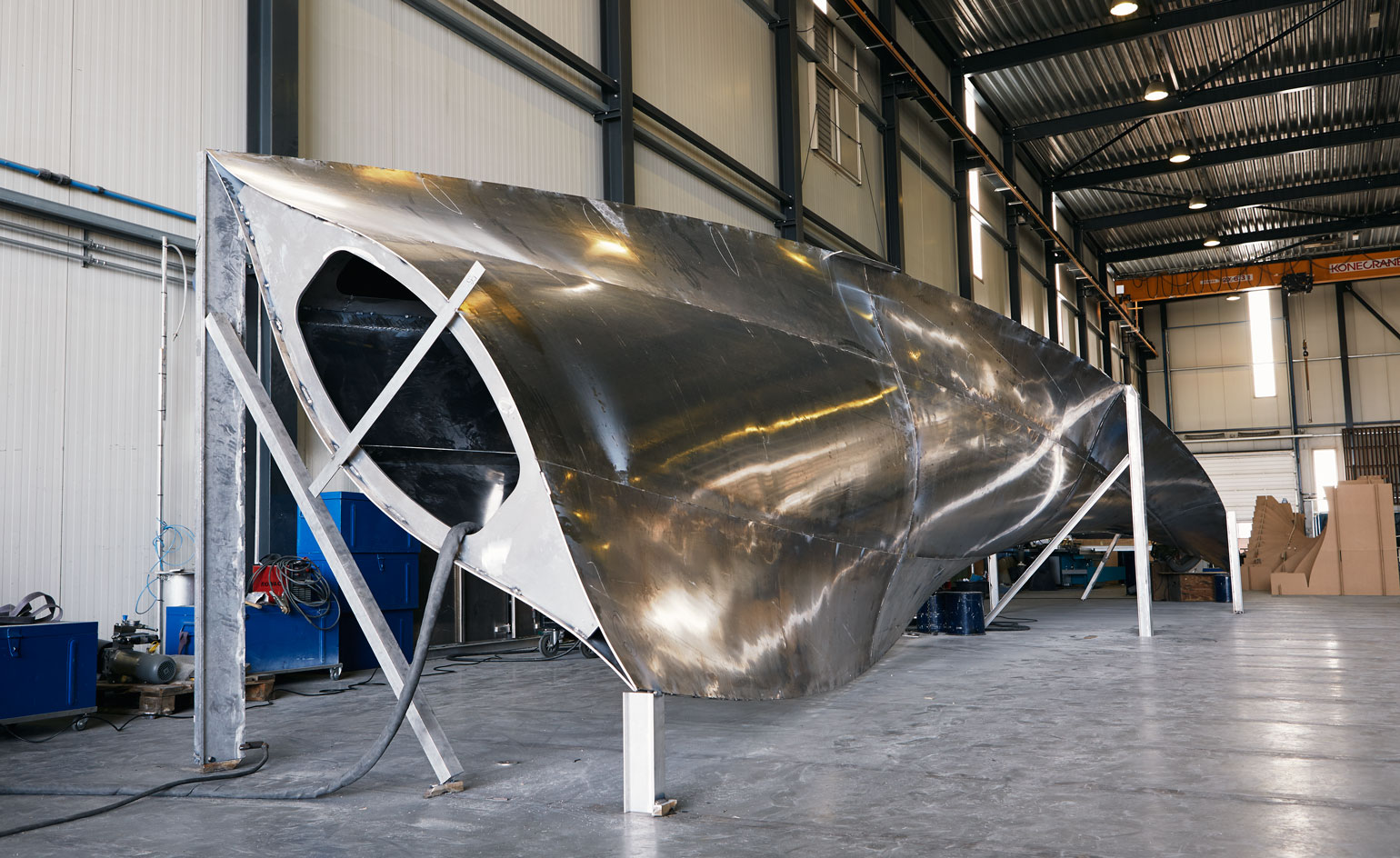
The twisted blade as a work in progress, before its polished finish
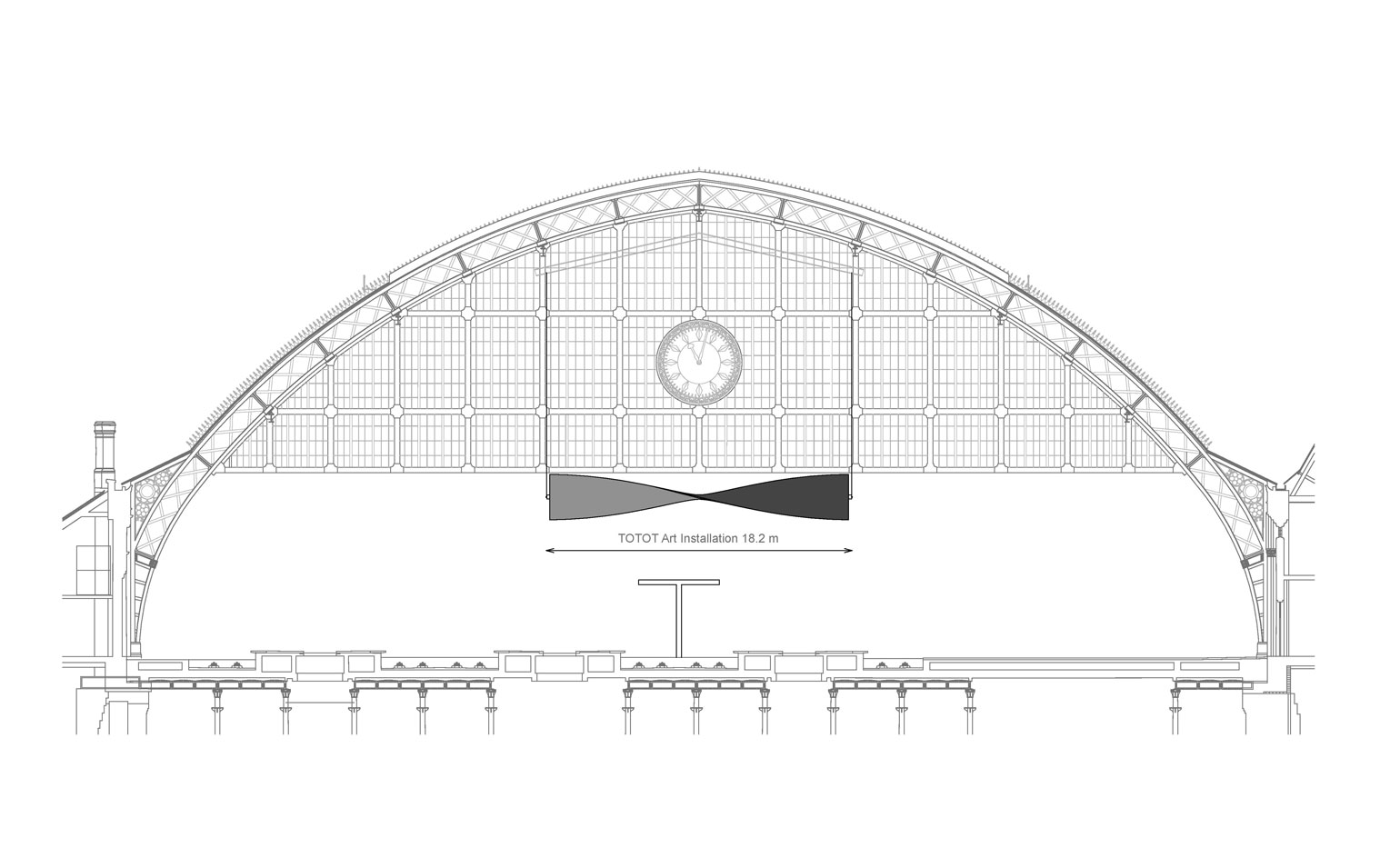
Arad’s sketch of where the sculpture, with a span of 18.2m, will hang above the Grand Terrace at St Pancras
INFORMATION
For more information, visit the St Pancras railway station website or the Royal Academy's website
Photography: Ester Grass Vergara
ADDRESS
St Pancras railway station
Euston Road
London, N1C 4QP
Receive our daily digest of inspiration, escapism and design stories from around the world direct to your inbox.
-
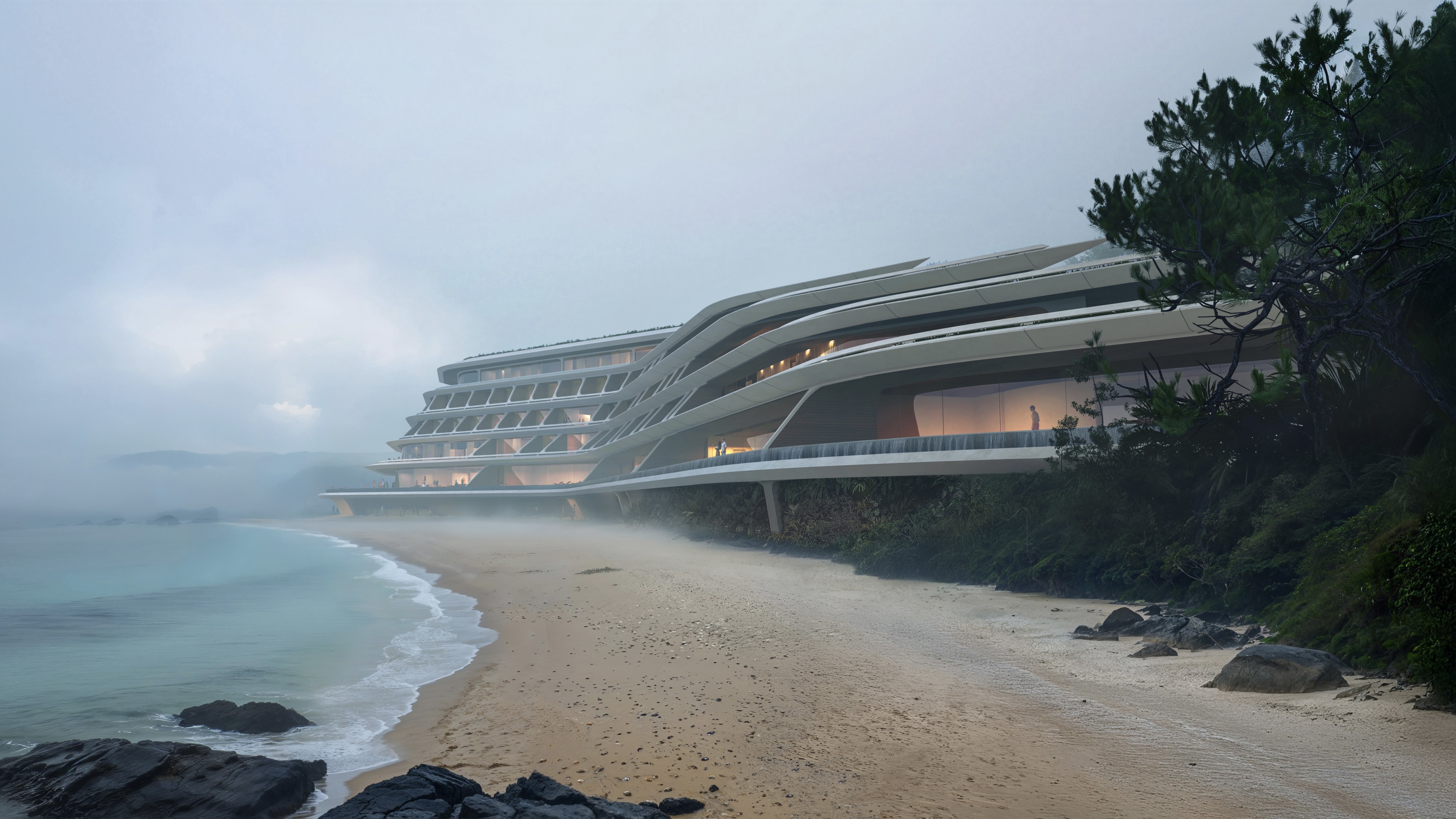 Curvilinear futurism meets subtropical beaches at Not A Hotel’s ZHA-designed Okinawa retreat
Curvilinear futurism meets subtropical beaches at Not A Hotel’s ZHA-designed Okinawa retreatZaha Hadid Architects has revealed the design for the first property in Not A Hotel’s futuristic new Vertex collection, coming soon to southern Japan
-
 Gorden Wagener leaves the helm of Mercedes-Benz design after 28 years with the company
Gorden Wagener leaves the helm of Mercedes-Benz design after 28 years with the companyThe German designer is stepping down from the role of chief design officer at Mercedes-Benz. We look back at his influence and impact on the world of automotive and luxury design
-
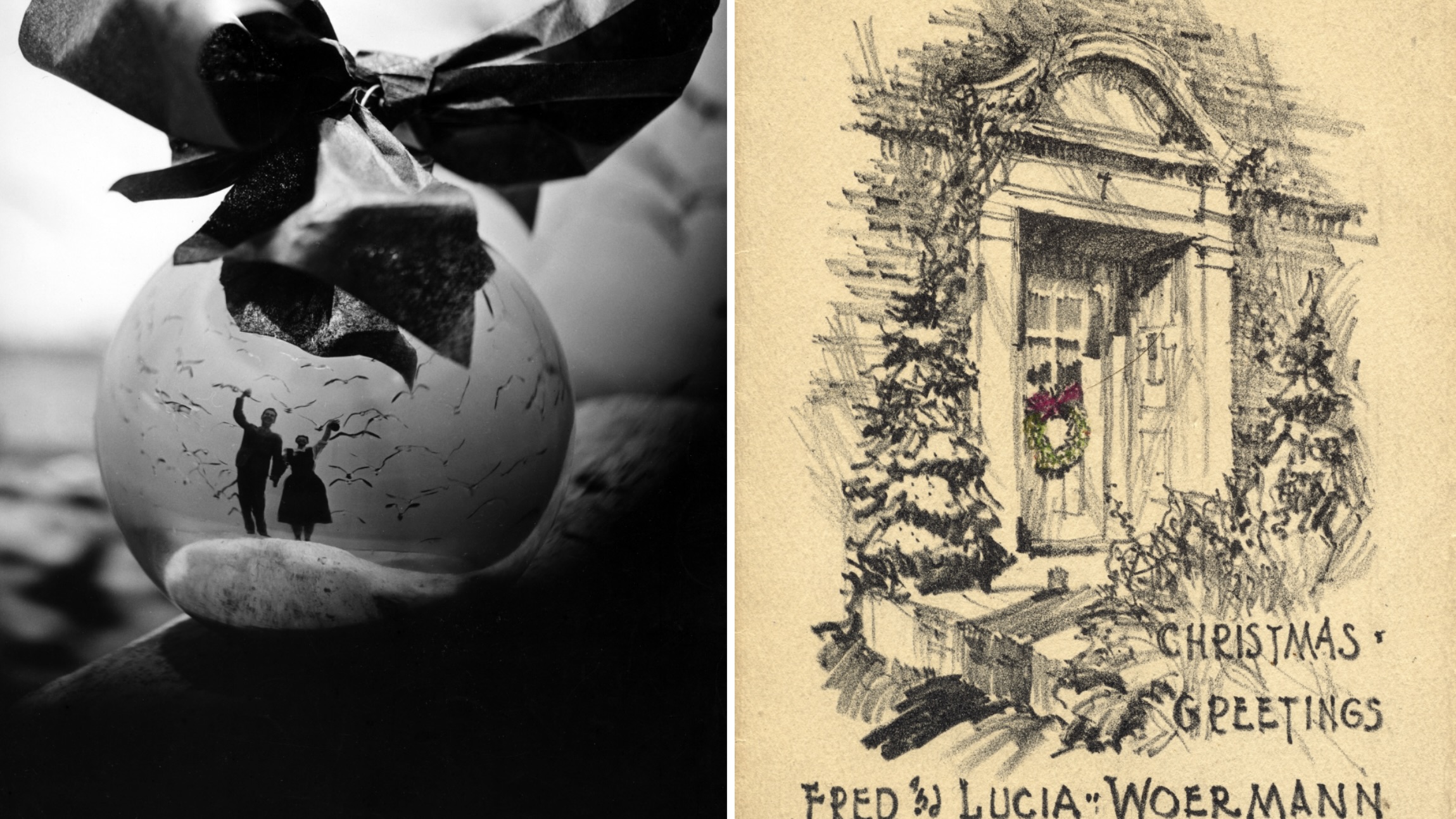 These Christmas cards sent by 20th-century architects tell their own stories
These Christmas cards sent by 20th-century architects tell their own storiesHandcrafted holiday greetings reveal the personal side of architecture and design legends such as Charles and Ray Eames, Frank Lloyd Wright and Ludwig Mies van der Rohe
-
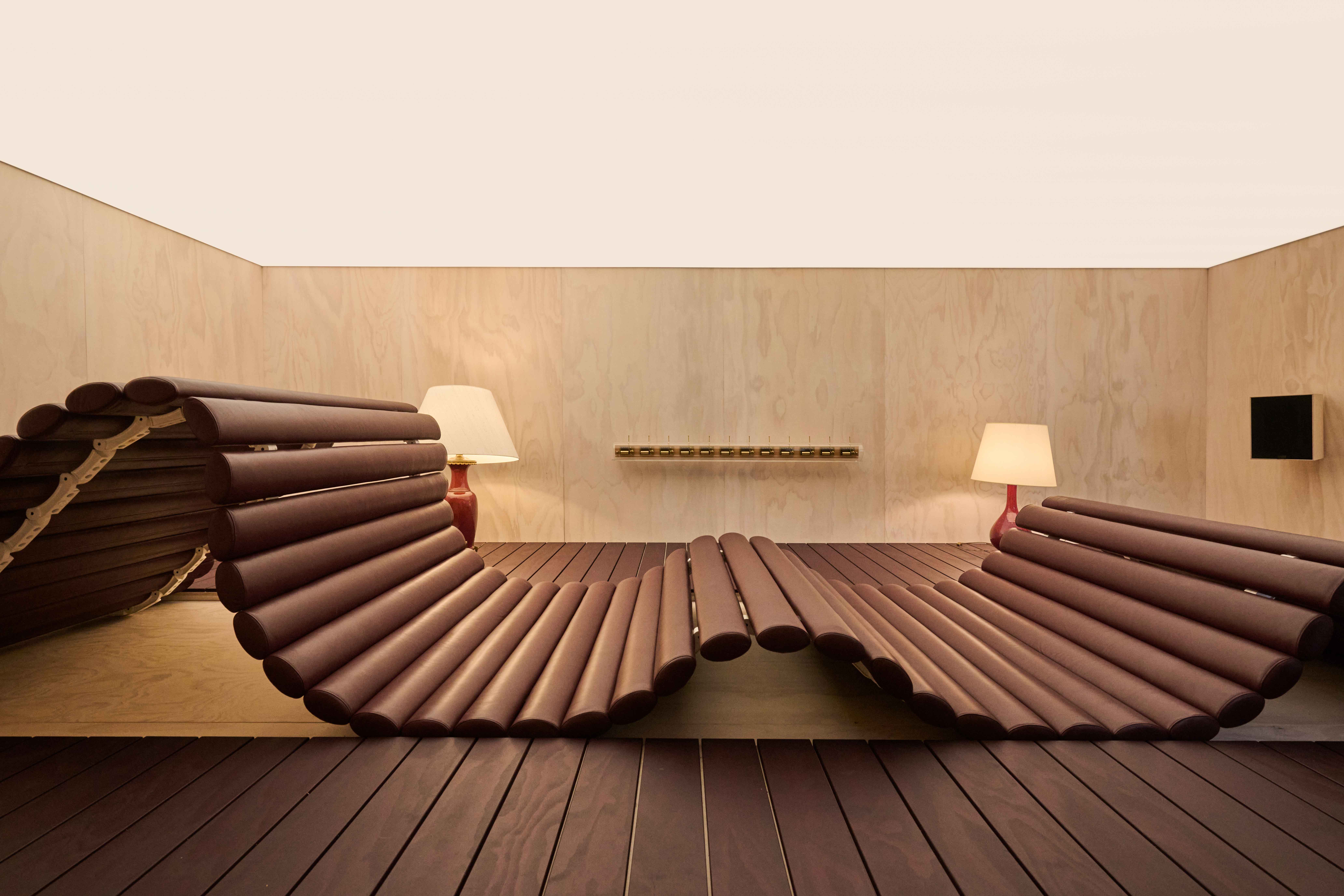 Best of Design Miami Paris 2025: animal sculptures and musical ping-pong tables
Best of Design Miami Paris 2025: animal sculptures and musical ping-pong tablesDesign Miami Paris returns to the Hôtel de Maisons (until 26 October 2025): here are the Wallpaper* highlights
-
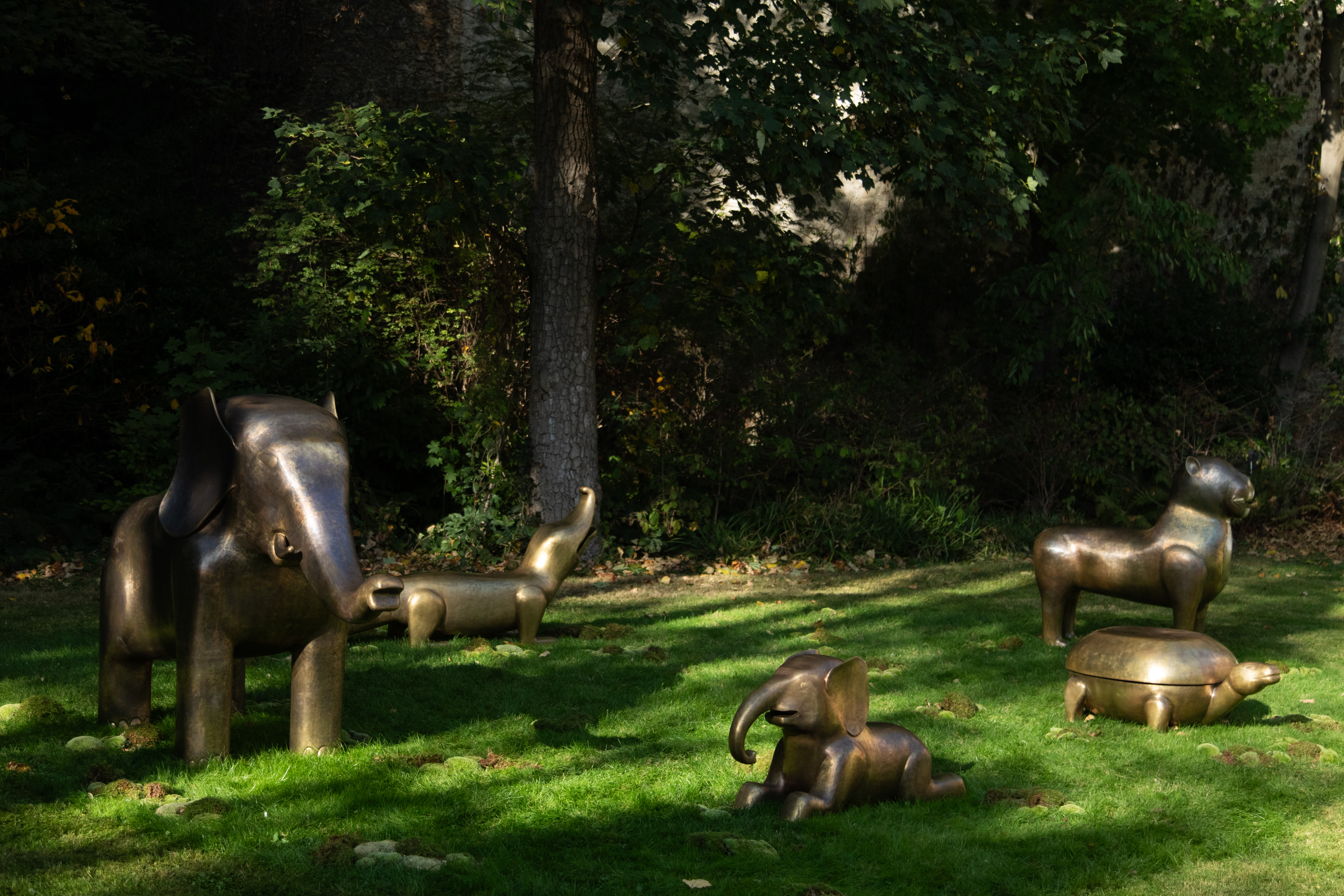 At Design Miami Paris, an artful menagerie tells a story of scent and nature
At Design Miami Paris, an artful menagerie tells a story of scent and natureVikram Goyal and Sissel Tolaas present ‘The Soul Garden’ at Design Miami Paris (until 26 October 2025), ‘a contemporary fable where the animals take new forms, reimagined for the world we live in today’
-
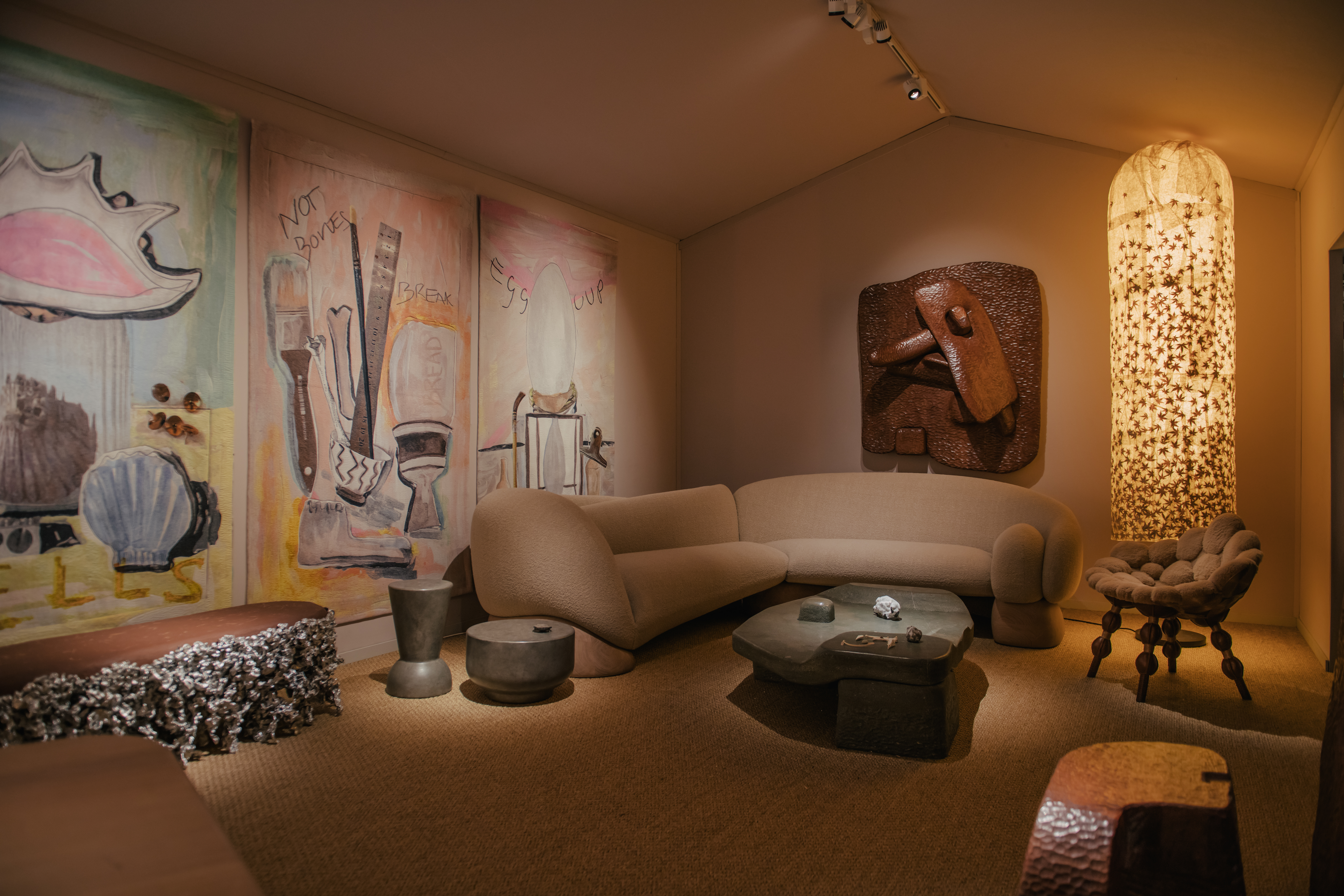 Step inside Faye Toogood's intimate cabinet of curiosities at PAD London
Step inside Faye Toogood's intimate cabinet of curiosities at PAD LondonFor PAD London 2025, (until 19 October) Faye Toogood presents The Magpie’s Nest with Friedman Benda
-
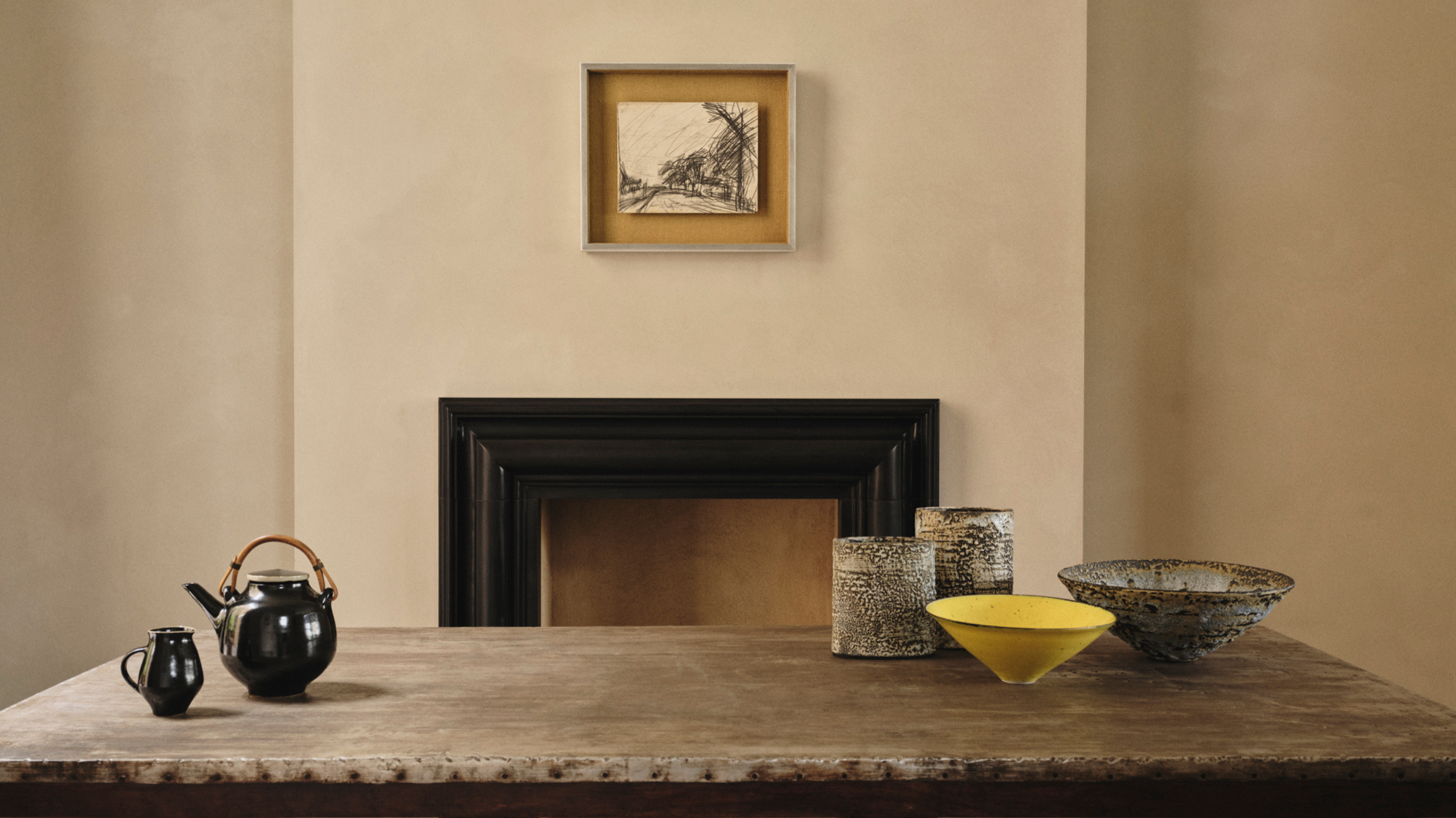 Rajan Bijlani opens his Primrose Hill home for ‘Electric Kiln’
Rajan Bijlani opens his Primrose Hill home for ‘Electric Kiln’In his London home – once the studio of ceramicist Emmanuel Cooper – Rajan Bijlani stages ‘Electric Kiln’, uniting Frank Auerbach, Lucie Rie and Cooper in an intimate reflection on the creative spirit of postwar London
-
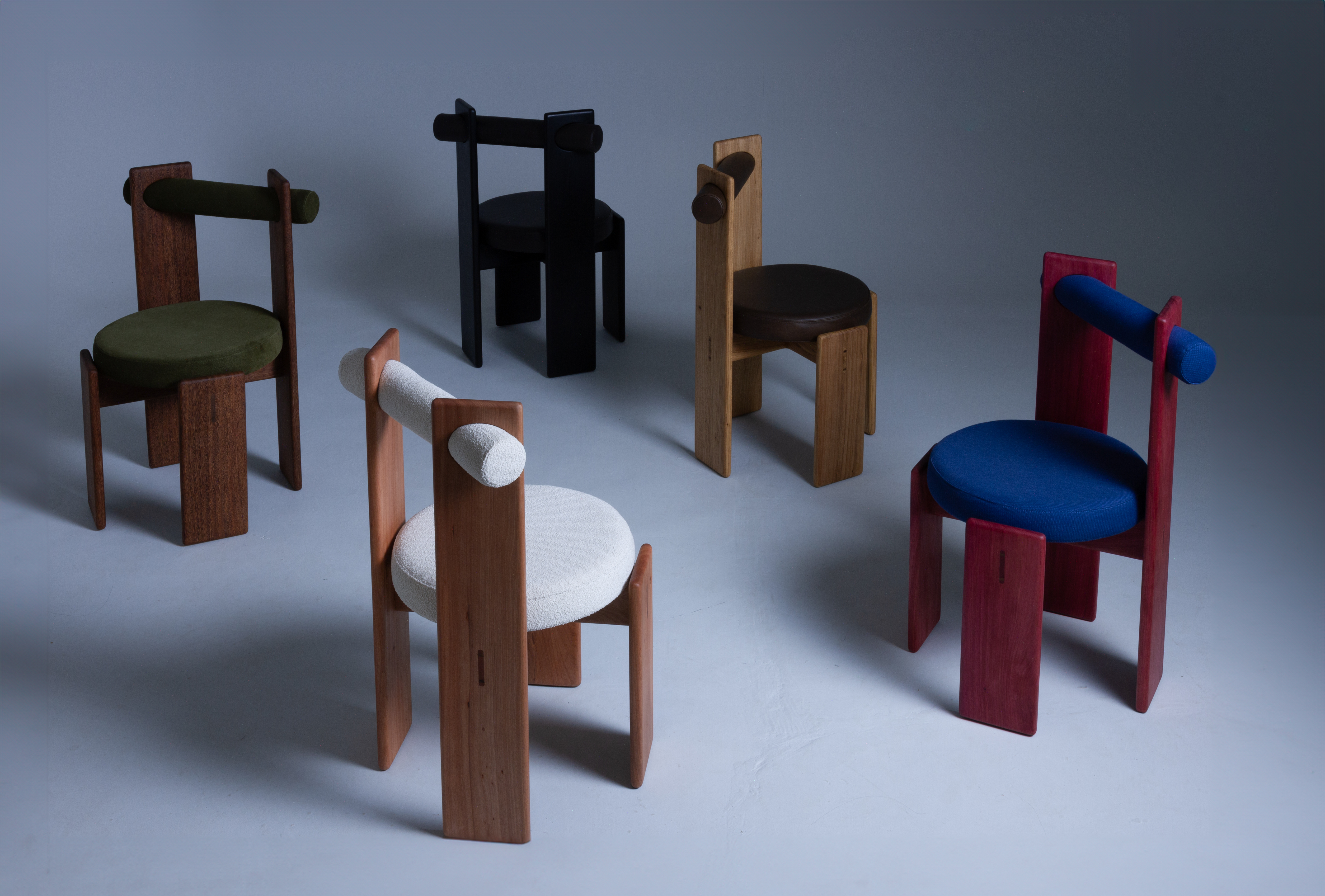 These are the design exhibitions to see in London during Frieze Week
These are the design exhibitions to see in London during Frieze WeekWe round up the best design events happening in London in conjunction with Frieze Week 2025: discover collectible design and craft across the city
-
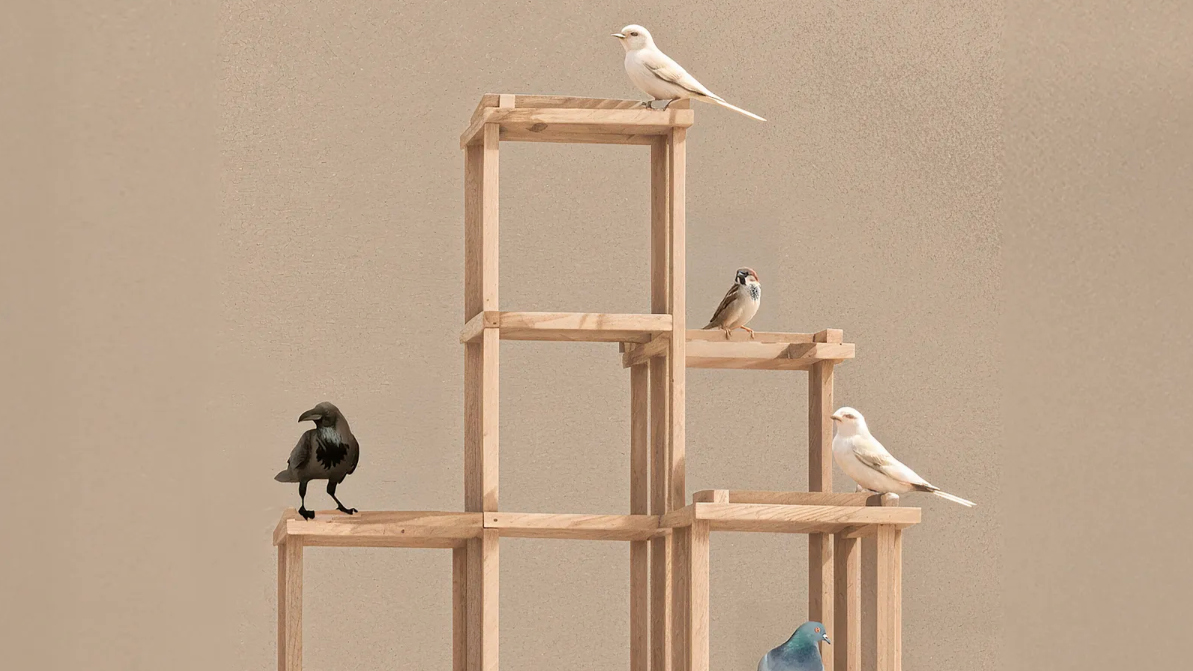 Norman Foster and nine other architects design birdhouses for charity – you can bid
Norman Foster and nine other architects design birdhouses for charity – you can bid‘Architects for the Birds’ is spearheaded by Norman Foster and the Tessa Jowell Foundation to raise funds to improve treatment for brain cancer. Ten architect-designed birdhouses will go up for auction
-
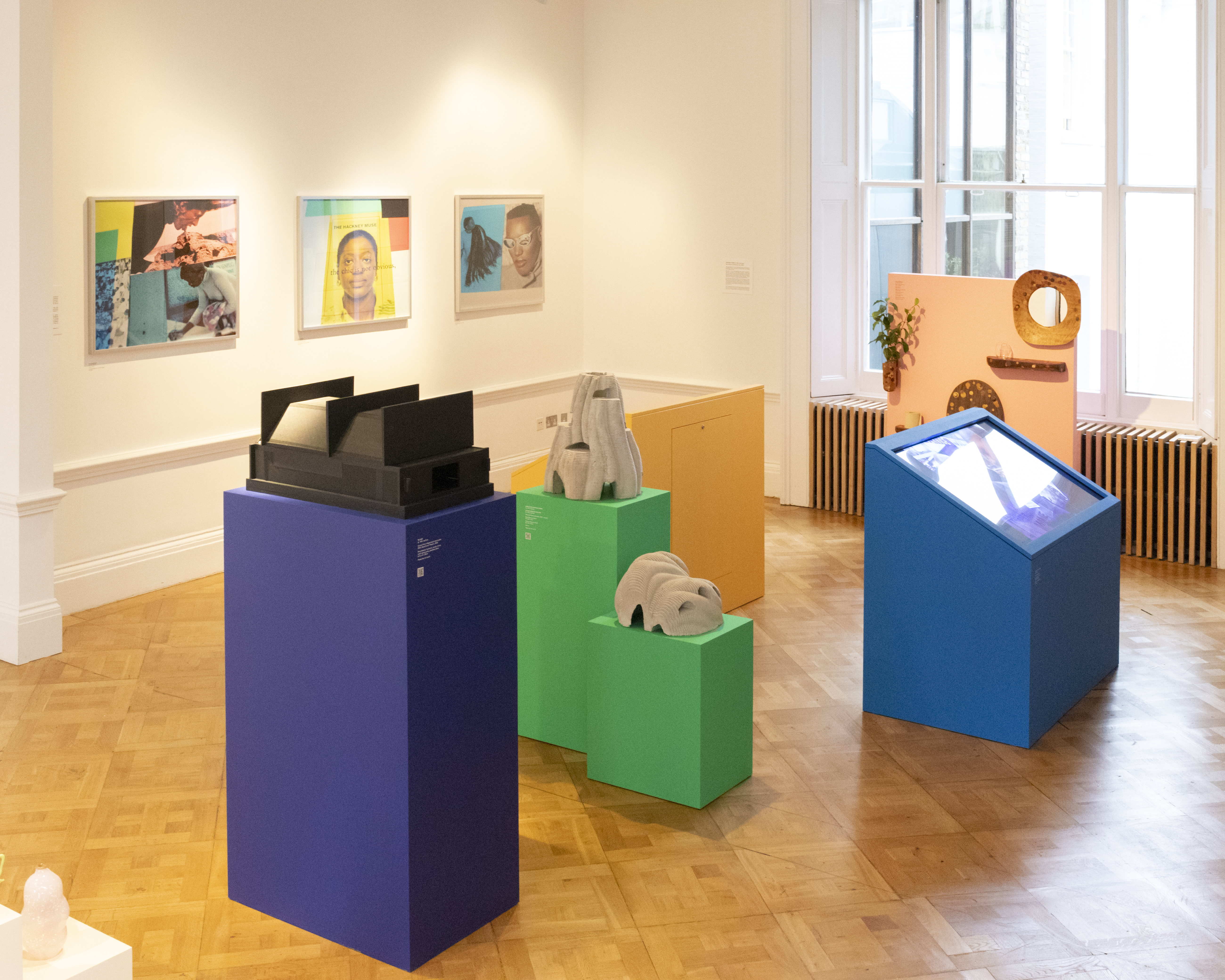 The David Collins Foundation celebrates creativity in all its forms at London Design Festival
The David Collins Foundation celebrates creativity in all its forms at London Design FestivalThe David Collins Foundation presents ‘Convergence’ at the Lavery during London Design Festival 2025 (on view until 19 September), featuring works from the Arts Foundation’s annual Futures Awards
-
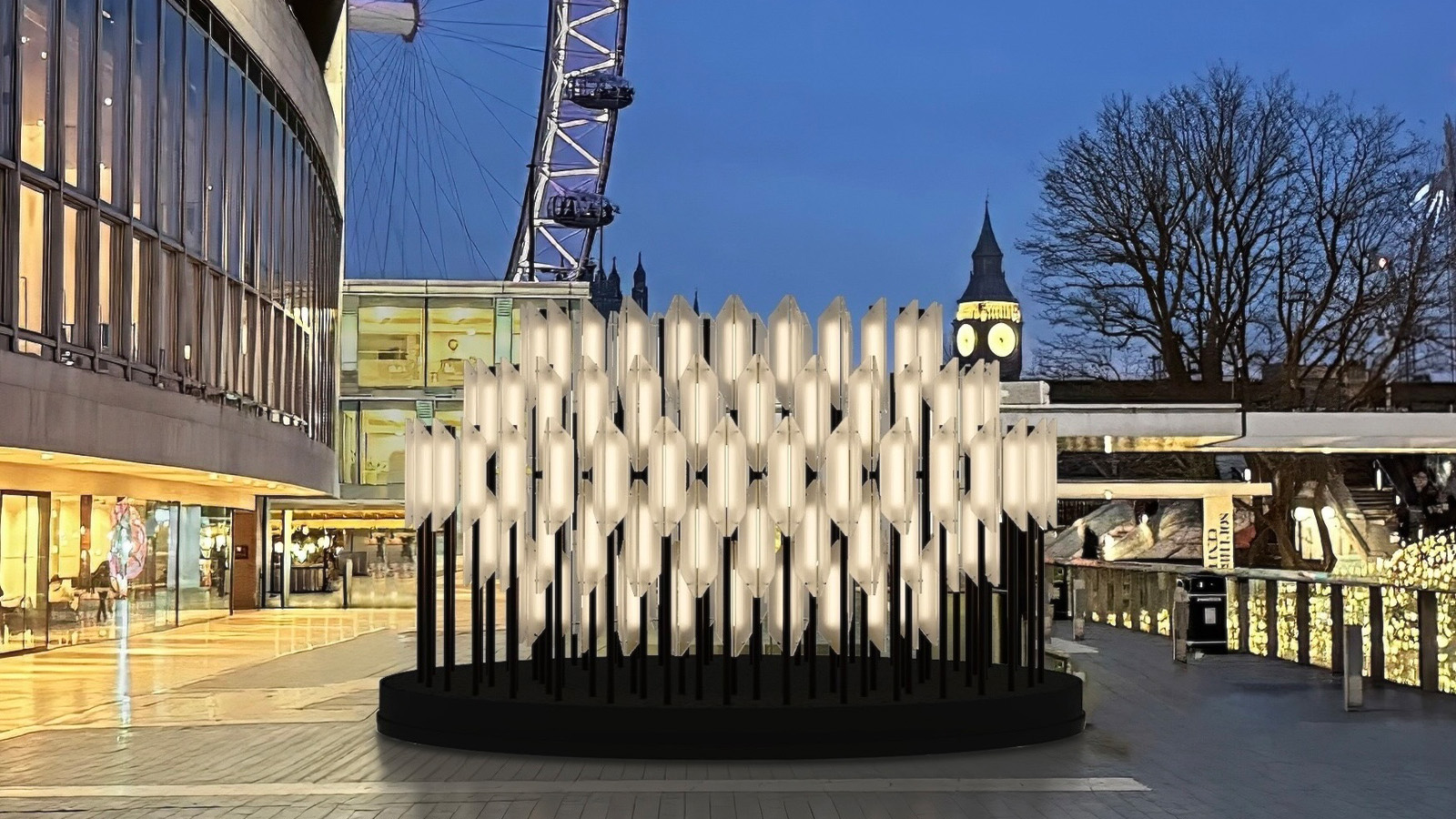 Lee Broom’s brutalist-inspired ‘Beacon’ will light up London as Big Ben strikes the hour
Lee Broom’s brutalist-inspired ‘Beacon’ will light up London as Big Ben strikes the hourSet to pulse through London Design Festival 2025 (13-22 September) and beyond, the British industrial designer’s sculptural light installation on the South Bank draws on its surroundings